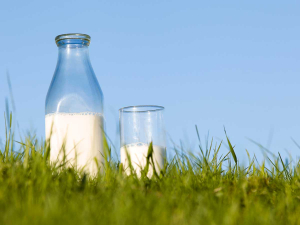Fonterra shaves 50c off forecast milk price
Fonterra has dropped its forecast milk price mid-point by 50c as a surge in global milk production is putting downward pressure on commodity prices.
 Fonterra and New Zealand’s Agricultural Greenhouse Gas Research Centre are part of an international group that includes Nestle, Danone, Arla Foods and FrieslandCampina.
Fonterra and New Zealand’s Agricultural Greenhouse Gas Research Centre are part of an international group that includes Nestle, Danone, Arla Foods and FrieslandCampina.
Dairy's superpowers are lifting their game on proving greenhouse gas credentials.
Mitigation Actions in Life Cycle Assessment (MiLCA) is a protocol that gives dairy companies and consumers confidence that claims for GHG emissions stack up.
Fonterra and New Zealand's Agricultural Greenhouse Gas Research Centre are part of an international group that includes Nestle, Danone, Arla Foods, and FrieslandCampina.
MiLCA is credible and is far from a back-of-the-envelope calculation, greenhouse gas scientist Aaron Simmons told the International Dairy Federation conference in Paris recently.
"We haven't made this up at a backyard barbecue while we've been drinking a few beers. What MiLCA ultimately does is demonstrate that we're taking action on climate change," Simmons says.
Simmons, a senior scientist with the NSW Department of Primary Industries, specialises in estimating GHG reductions.
There were lots of claims out there for carbon sequestration products, he said.
"Do consumers trust that? I don't trust the majority of them and that's my area of expertise."
The first step to building trust in various products was to build a body of scientific evidence to independently test claims.
The idea was to build trust in the consumer.
By being "robust and defensible", the industry could create a positive, credible narrative.
"So, rather than someone coming in an putting in the boot to the dairy sector, it allows the sector to stand up and say 'hey, we're doing the right thing'."
MiLCA could show that technologies for reducing GHGs were safe as well as effective, like proving that the dairy industry wasn't doing harm in some other area by reducing emissions.
"There's a whole heap of indicators that we could be creating problems with so there needs to be a Life Cycle Assessment that shows 'we're going to reduce greenhouse gas emissions - and relative to what we're doing now, we're not going to screw up much else'."
The impact of the farming system also needed scrutiny, in areas like animal health and product quality.
There are currently two frameworks for calculating and reporting GHG emissions. First, a greenhouse gas inventory, likely used for a country or a dairy business.
An inventrory can help identify the greatest single source of emissions. At an international scale, that information is usually passed on to the United Nations Climate Change Conference - forming a global picture of how well the planet is doing on reducing emissions.
The other framework addresses claims about reducing GHGs. It's important for people to understand that the two frameworks use completely different methodologies.
In Australia, for instance, carbon credits that are generated through soil-carbon sequestration don't show up in the country's national inventory when it reports to the UN.
Basically, it was a "horses for courses" approach, Simmons said.
Tim Fulton travelled to Paris with support from the New Zealand Guild of Agricultural Journalists and Communicators.
OPINION: The latest reforms of local government should come as no surprise.
The avocado industry is facing an extremely challenging season with all parts of the supply chain, especially growers, being warned to prepare for any eventuality.
Rural recycling scheme Agrecovery is welcoming the Government's approval of regulations for a nationwide rural recycling scheme for agrichemicals and farm plastics.
Despite a late and unfavourable start, this year’s strawberry crop is expected to be bountiful for producer and consumer alike.
Nearly three years on from Cyclone Gabrielle, Hawke's Bay apple orchardist Paul Paynter says they are still doing remedial work around their orchards and facing financial challenges.
An unusual participant at the recent Royal A&P Show in Christchurch was a stand promoting a variety of European products, during an event that normally champions the homegrown.